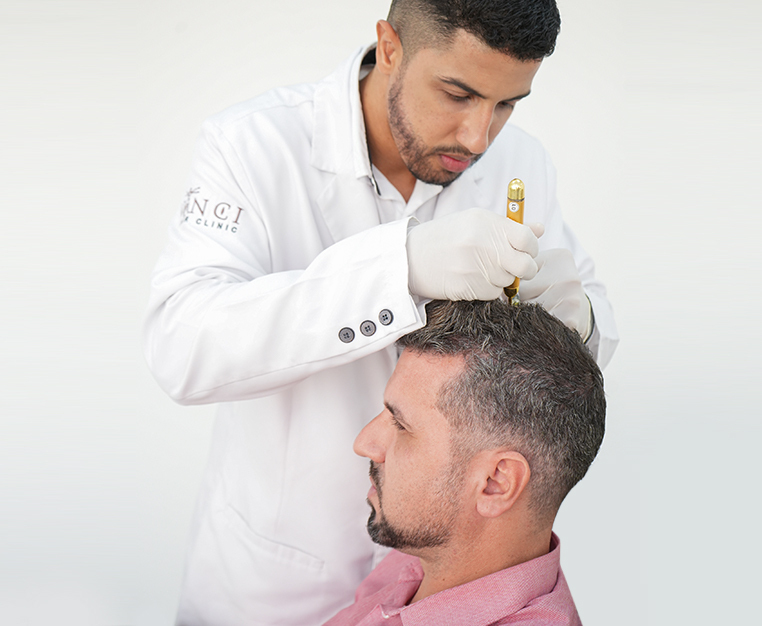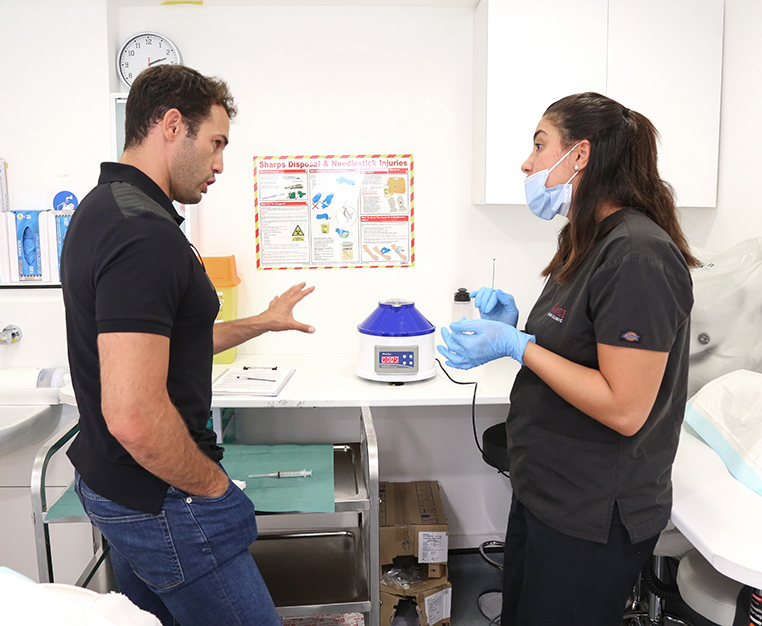There are several causes of hair loss, from bad genes to stress. Just as there are various causes, there are different treatments, too. In this article, you will learn about a relatively new hair regrowth treatment which promises to thicken thinning hair. Don’t worry. It doesn’t involve any surgical procedures with long layoffs. The way this whole procedure works may even surprise you.
What is Platelet-rich Plasma?
Platelet-rich plasma or PRP for short is a component of your blood which dermatologists recover by taking your blood. They use a high-speed centrifuge machine to separate the blood into its main parts, red blood cells and plasma. Plasma contains white blood cells and platelet, which in turn, are rich in several proteins, including growth factors.
Growth factors carry messages to the different cells of the body, giving them instructions. In this case, its the hair cells which receive the instructions to grow, promoting new hair growth. Growth factors have other medicinal uses such as in treating arthritis, as well as in the aesthetic industry to fight the signs of ageing. SO, all in all, growth factors are not a new thing, but their application in hair restoration is.
How does the process work?
Unlike the image you may have in your mind about having to spend hours to get this procedure, it is a relatively short but meticulous process. It starts with a blood draw from the arm. Next, the blood is placed in a centrifuge which spins at high speed, to separate the blood. After that, the doctor takes the plasma and injects it into the area where the hair is thin.
The plasma is injected at 1-inch intervals across the scalp in an exact manner, mainly over the area of thinning hair. The procedure typically takes under an hour from start to finish.
What are the risks involved in this type of treatment?
Blood and needles may sound scary, but PRP involves minimal risks in comparison to other procedures. If you have had a Botox or dermal filler treatment, then you have nothing to worry about. In most cases, you will not need any anaesthetic injections beforehand. There is usually bruising after the treatment which may last for a couple of weeks.
Three treatment sessions over three months have proven to be the optimum in producing the best results. A maintenance procedure every three to six months will ensure you get to enjoy your newfound head of hair.
Doctors recommend a hot shower to promote an increase in blood flow and circulation through the scalp. PRP is a very little to zero downtime procedure.
Who will PRP Work For?
If you have been diagnosed with androgenetic alopecia (AGA), a genetic hair loss condition that affects men and women, then you are a great candidate for PRP. Hormonal imbalances cause AGA an in men it occurs as hair loss at the top and front of the head, leading to balding. In women, hair loss is along the mid-parting and spreads wider. There is evidence that supports that you may get even better result combining PRP with anti-androgenic medication. Your dermatologist will discuss these options when they review your progress.
What results to people who undergo PRP treatment see?
A consistent approach to treatment will produce the best results. A typical treatment cycle, as previously mentioned, involves three or four treatments spread over four to six months. You will notice reduced shedding and early new growth and longer hair.
It is worth mentioning again that most successful cases involve combining PRP with medication to treat hair thinning and loss. Typical remedies include using spironolactone or finasteride which promotes hair growth. Topical medications such as Rogaine are also suitable combination treatments for the optimum results.
PRP can be costly, but it is safe, and the results are amazing
This treatment is not for everyone, especially if you have a needle phobia. The cost of the treatment may not be affordable for some people, and the fact it takes a few sessions before you start seeing the results means the costs can stack up.
The procedure is safe if performed in a secure environment by a suitably qualified medical provider. Typical risks include mild soreness from the injections, redness and swelling and sometimes initial hair shedding.
Finding the right treatment for your unique hair situation
Platelet-rich plasma treatment procedure is among the hair regrowth procedures available at Vinci Hair Clinic. We offer several hair loss treatment options that your specialist will discuss with you during your consultation. If for any reason PRP is not right for you, there are other solutions to help, so do not despair.


